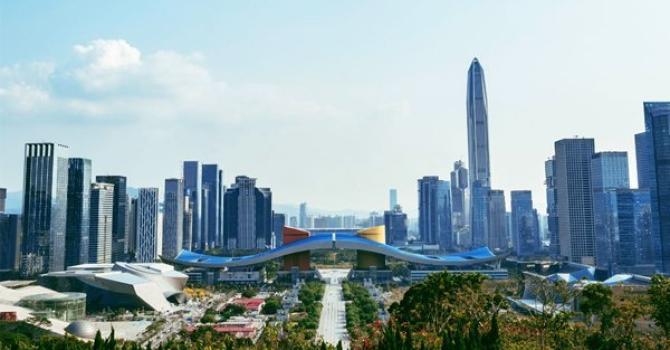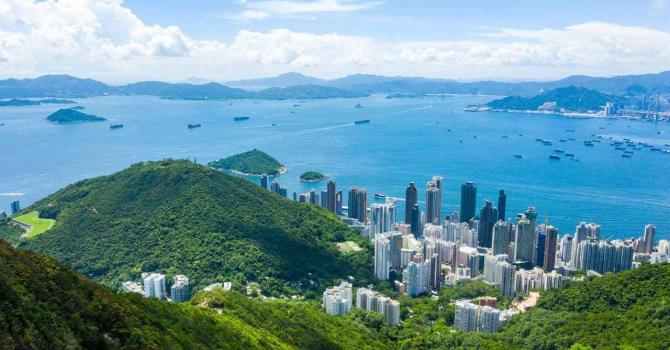SCMP: Greater Bay Area is more than a map – it’s a vision for Hong Kong and Macau to lead China’s modernisation
Under the Greater Bay Area, Hong Kong and Macau will be more closely involved in the country’s overall development. They and Guangdong province are the front runners, which other parts of China must try to catch up with
Criticism that the “Greater Bay Area” plan is long on rhetoric and short on implementation details misses the point. An outline plan in Chinese policymaking is general but directional in nature. It is not a road map with specific implementation details – these are to be worked out – but more like the five-year plans that the national government promulgates.
The bay area plan was conceived to take China’s most dynamic socioeconomic region to the next stage of development by emphasising greater cooperation between Guangdong province – the mainland’s leading gross domestic product contributor for 28 years – Hong Kong and Macau, which together take the region’s GDP to US$1.5 trillion.
In China as a whole, the Greater Bay Area also has the most advanced political structure in light of the two special administrative regions’ electoral systems. As the region continues to advance, Hong Kong should not lose heart in seeking further political and administrative reforms, but it will have to work hard for change.
The bay area plan has the highest possible level of support, which was why it was specifically raised in Premier Li Keqiang’s government work report at the recent National People’s Congress in Beijing. Hong Kong and Macau need to play to their strengths as they have long and deep international ties, and a range of management experience that other places in China do not yet have.
The National Development and Reform Commission, China’s government planning body, also emphasised that it would support Hong Kong and Macau to play a bigger role in the country’s overall development. This can be seen from two perspectives.
First, people from Hong Kong and Macau will have more opportunities to study, work and live on the mainland, and red tape will be removed or relaxed. New attractive arrangements for taxation, subsidies, travel and access to mainland public services are on the table.
Guangdong, Hong Kong and Macau should cooperate in drawing up plans to facilitate industrial and economic advancement, as well as on environmental protection. The physical connecting infrastructure, by land and sea, is now in place and there are multiple affordable means of travelling within the region.
The set timelines are ambitious. The Greater Bay Area plan covers the immediate period from now till 2022, and extends to 2035 – when the aim is for China to achieve modernisation. There are, in fact, many national plans pointing the country in that direction.
In other words, the bay area has a wider mission. Its advanced status is what other parts of China will aim to achieve, and the region is expected to have pushed further ahead in its development by 2035.
Together, Hong Kong, Macau and Guangdong are the front runners. There will be support and pressure from the central authorities to get the Greater Bay Area on track. Beijing’s vision is to put the region on a par with the San Francisco Bay Area (which has a GDP of about US$838 billion) or the Greater Tokyo Area (US$1.8 trillion), both of which are leaders in innovation with unique characteristics.
Guangdong has been asked to step up. Premier Li praised Guangdong for its impressive achievements to date and urged it to accelerate its transition to new economic activities so as to bring job opportunities and improve people’s lives. He emphasised that the next phase must involve deepening cooperation with Hong Kong and Macau so they can leverage each other’s strengths.
Senior Guangdong officials echoed his sentiments, saying they would take the needs of Hong Kong into consideration when designing projects. Joint projects in the pipeline include an international commercial bank for the development of the Greater Bay Area, investment institutions, development funds, as well as an international science and technology centre. These are all attractive if they could be done right.
There are two legitimate concerns, however. Political encouragement alone cannot overcome years of regional rivalry. The bay area is a stir-fry of competing policies and incentives among the 11 cities, with Hong Kong and Macau having totally different approaches. Thus, it remains to be seen whether all the various parts can truly find ways to cooperate that will benefit the region as a whole. There will have to be some give and take.
While there is no shortage of capable people, the test will be whether government officials can work things out over the course of the next two years and bring the private sector along. To go from doing one’s own thing to willing cooperation, there needs to be a change in attitude.
Beyond the economy, there must be successful cooperation to produce clear societal benefits, such as in nature conservation and environmental protection, which will result in improved public health. Cultural collaboration on the intangible assets of south China – such as kung fu, opera, folk arts and food – can also create a sense of well-being.
Guangdong, Hong Kong and Macau are expected to start work right away to identify where and how they will deepen cooperation so that, by 2022, there should be many specific implementation details in place. A work plan for 2019 requires all relevant departments to focus attention and cooperate. There is no time to waste.
Hong Kong must not be a bystander in the creation of a larger stage.



